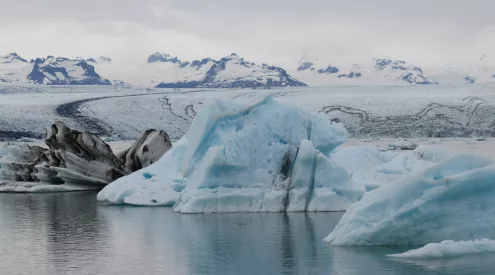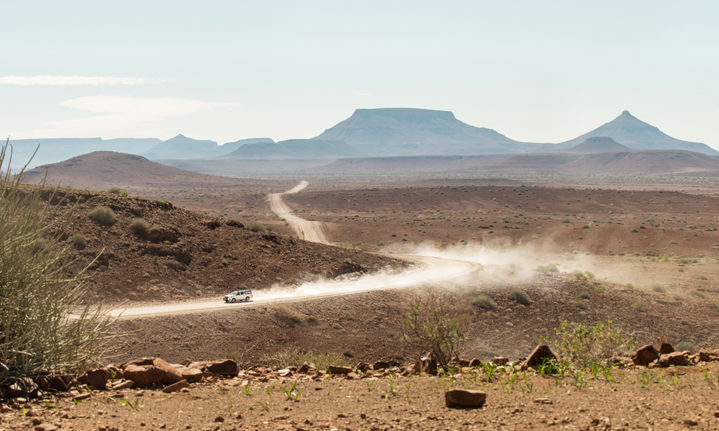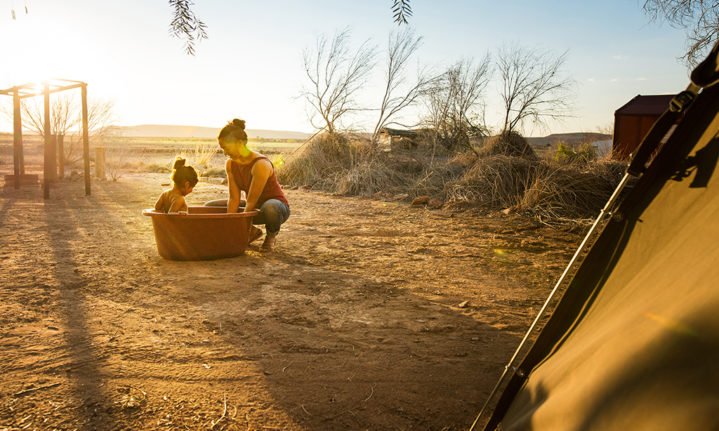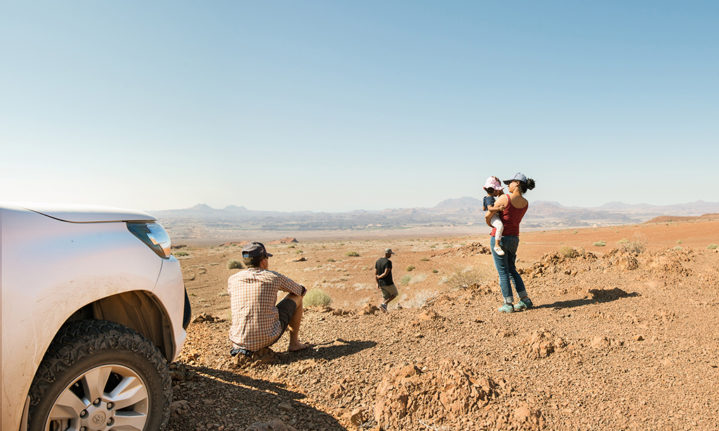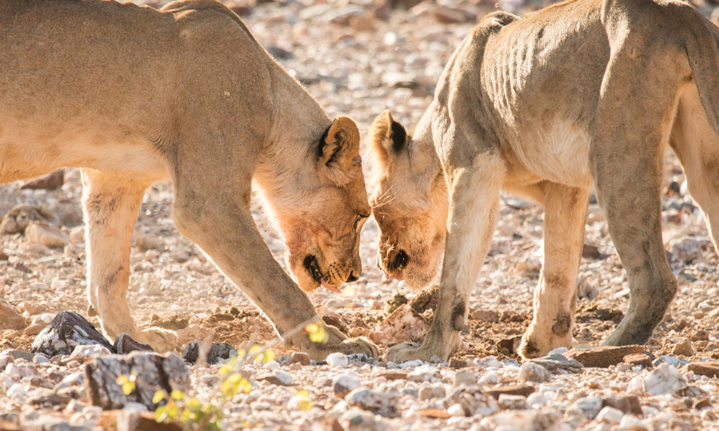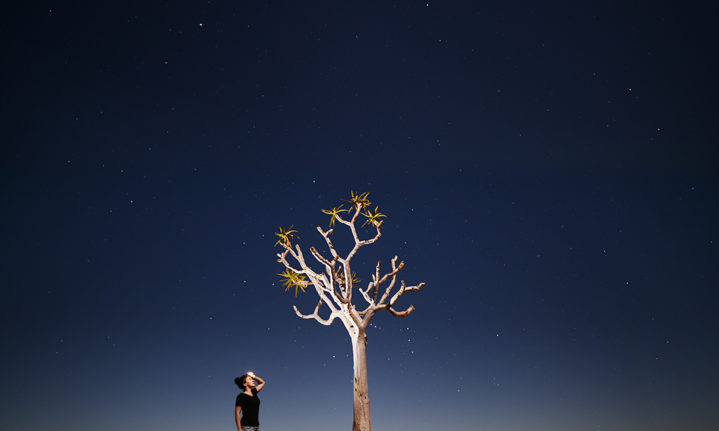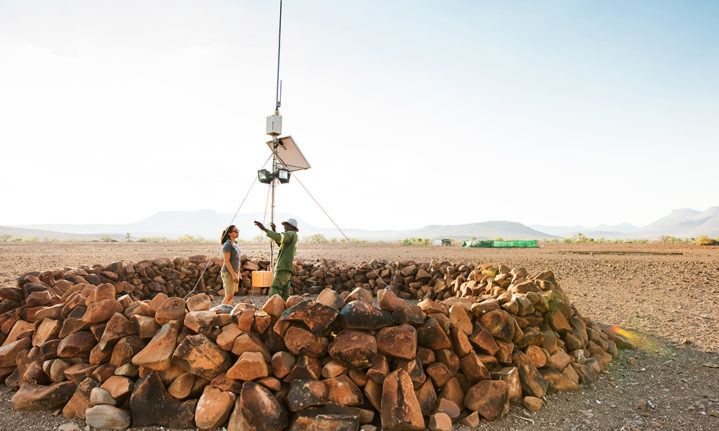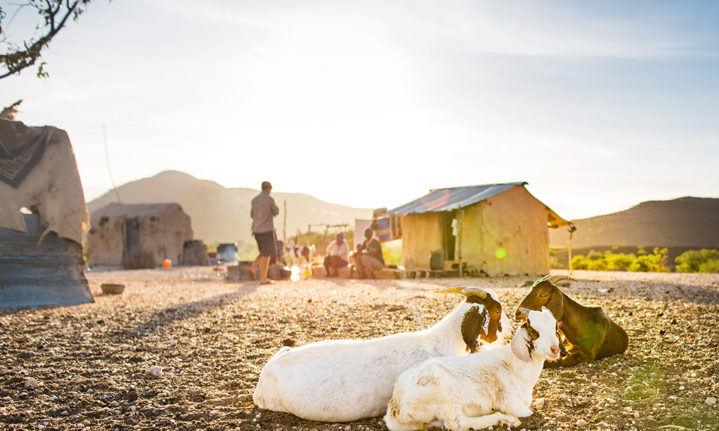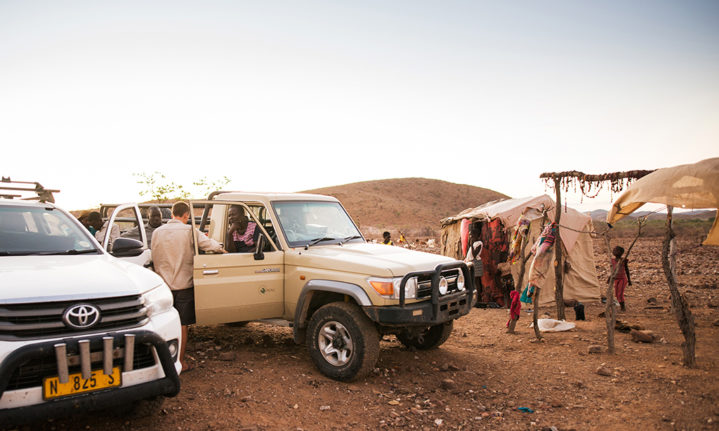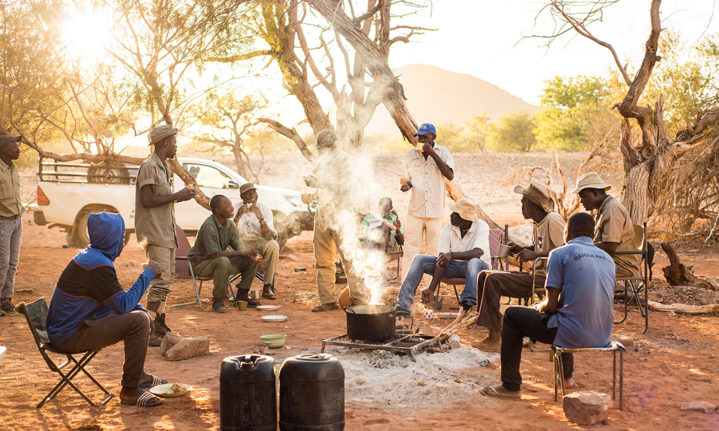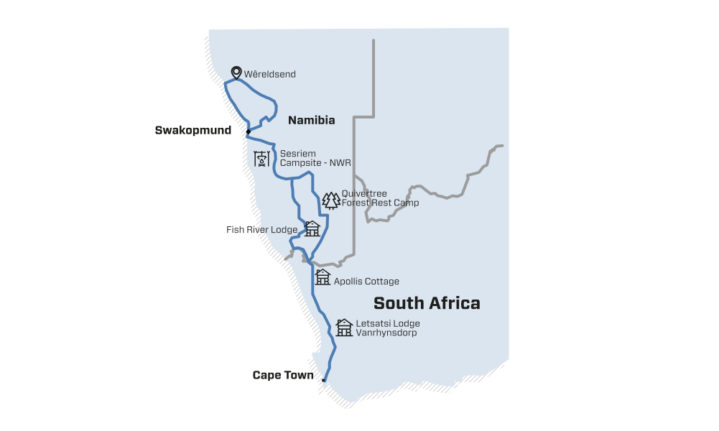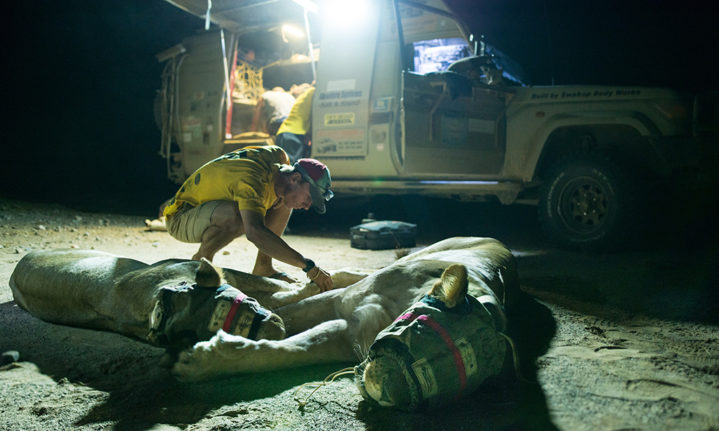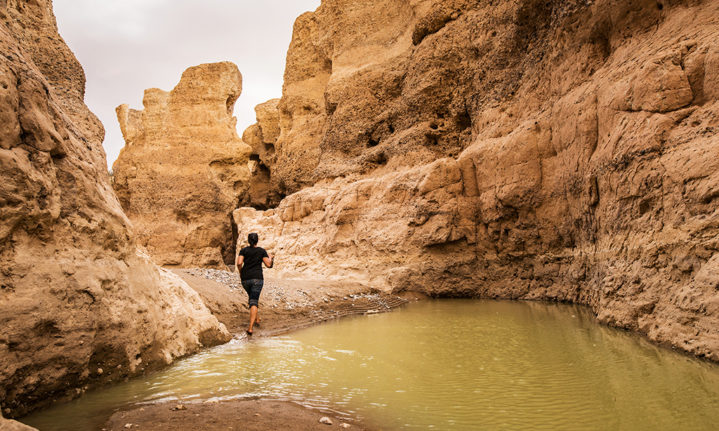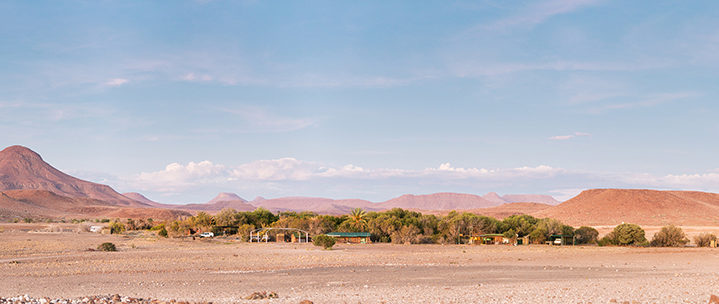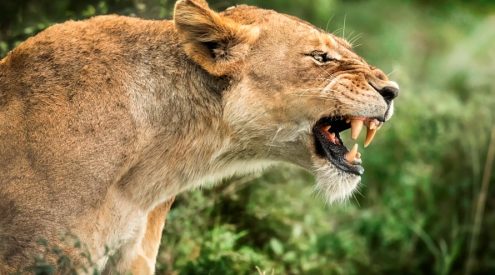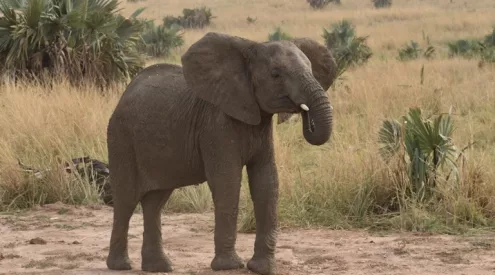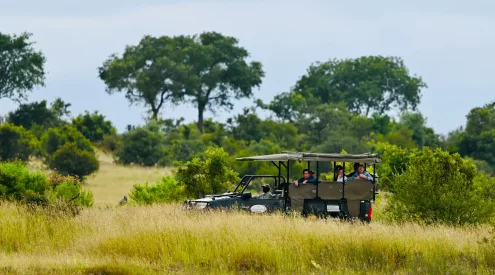Lynelle Govender makes the long journey to Namibia to meet Dr John Heydinger to learn more about his work with desert-adapted lions. Along the way she has a few adventures, especially when she adds her toddler to the equation.
Words: Lynelle Govender | Photos: AJ Wattamaniuk
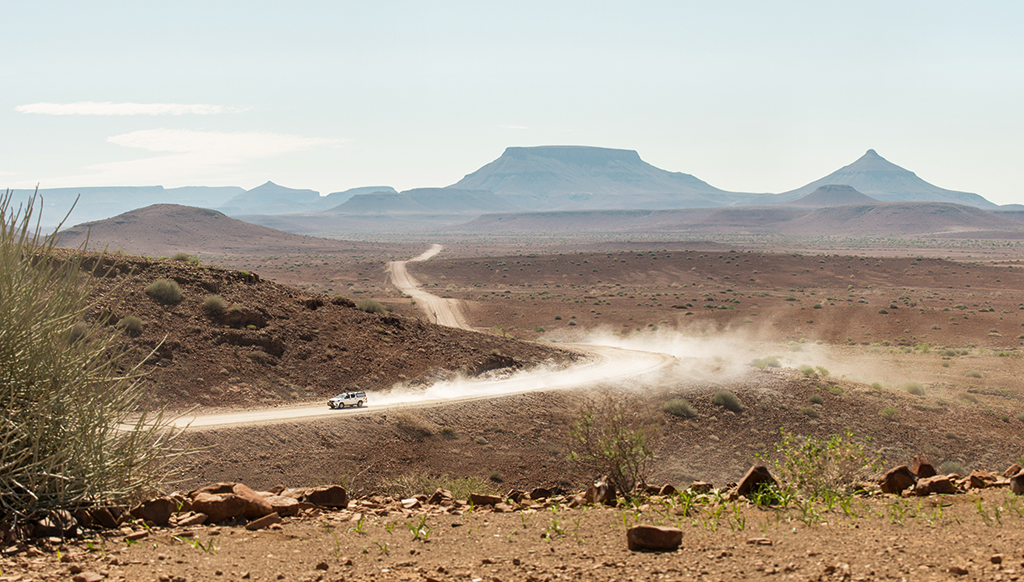
Our rental bakkie making easy work of the gravel roads, a few kilometres outside Wêreldsend Environmental Centre in the Kunene region of Namibia.
I am sitting quietly on a dusty rock wall in the remote Wêreldsend Environmental Centre in north-west Namibia. In the background, Dr John Heydinger is playing a slow song on his guitar that I don’t recognise. There’s a laziness to the light – and the heat and the people – around midday in Namibia. It is simply too hot to move. My two-year-old daughter is crouched in the sand. She wiggles her toes in the fine dirt and looks up at me with wonder and sunbeams in her eyes.
‘I like the fluffy dust mama.’ I smile at her, entirely enamoured with the way she views the world.
Dust has followed me around for the past two weeks. I can’t seem to shake it, or escape it or wash it out of my hair. A fortnight ago, my closest girlfriend, AJ, and I left Cape Town on the long drive to Kunene, Namibia. The plan was for my daughter to fly to Walvis Bay with my husband, Bash, to meet me in about 10 days. During those 10 days, the people we met along the way thought we were lunatics. Why would two women travel alone across two countries, in the desert?
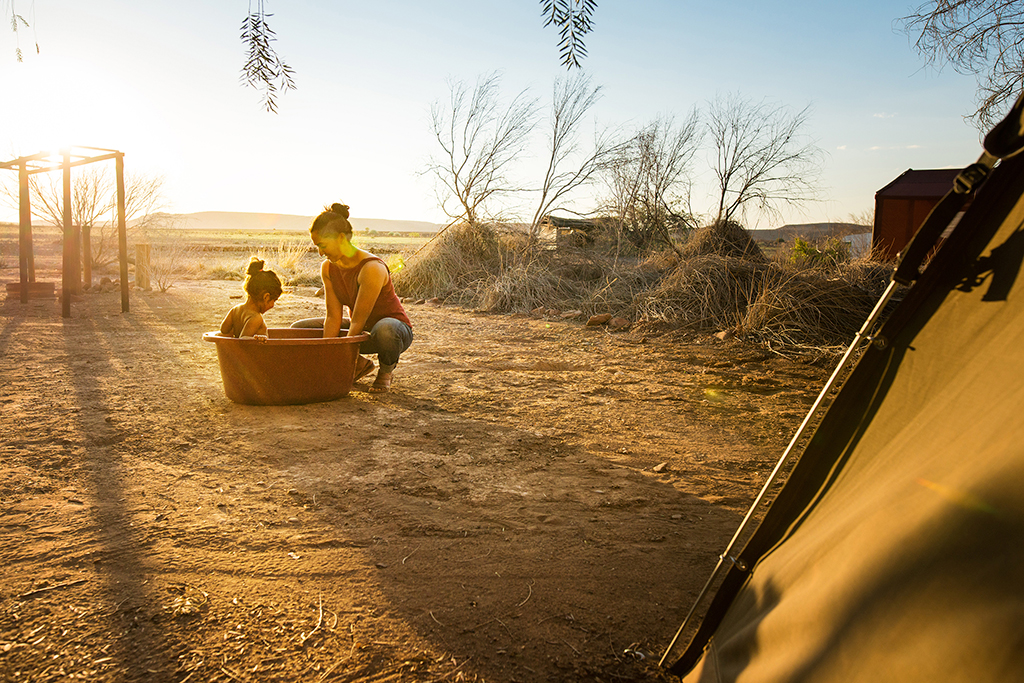
Keeping it clean at the camp. Lynelle Govender bathing her toddler at the Wêreldsend Environmental Centre camp.
Well, she’s a photographer and I’m a writer so there is something of a synergy between our skills and…we’re on a mission. We’re headed to meet Dr Heydinger, researcher and co-founder of The Lion Rangers programme in north-west Namibia.
The programme is central to managing human-lion conflict, where an estimated population of 80 to 120 free-roaming, desert-adapted lions share their territory with local communities. Rooted in community conservancies and community-driven wildlife management, the programme helps to manage human-lion interactions.
As a Cape Town city woman, I don’t really understand what any of that means. Lions don’t form part of my world and it’s hard to understand the reality of their role and impact in this part of Namibia. But I am determined to find out.
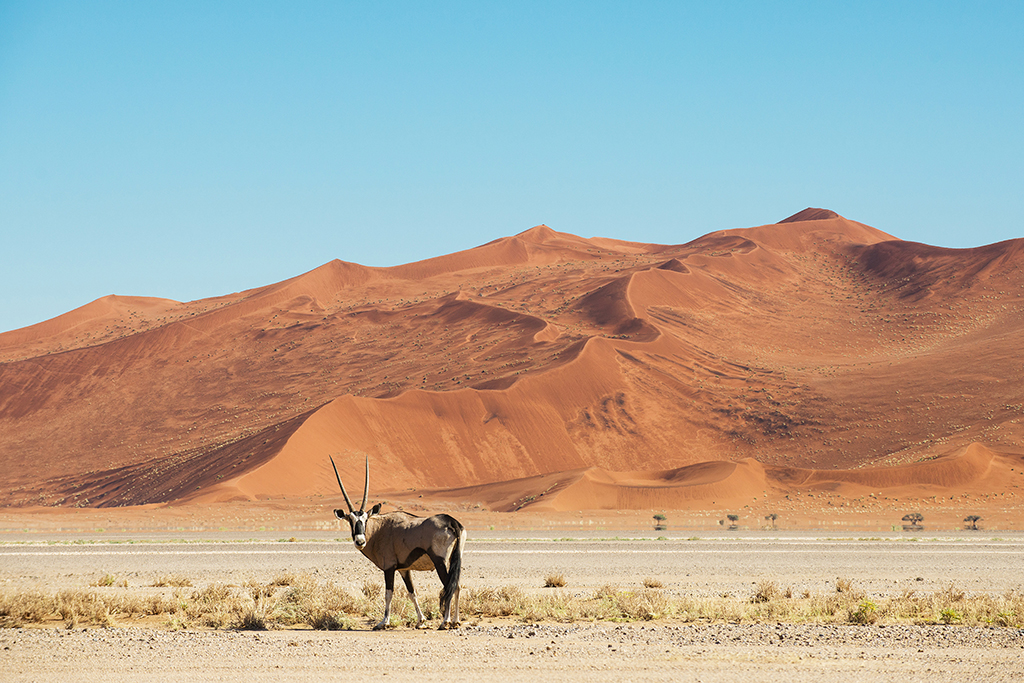
The trip may have been all about the lions, but there was still time to admire other wildlife, like this oryx near Sesriem which was clearly striking a pose.
We began our journey on the N7 out of Cape Town, a long ribbon of highway that cuts through the Northern Cape. I was having a rare moment of child-free travel and wondered what this brief period of separation would do to us. Anxious thoughts disturbed the surface of my mind; fears of what it would be like to travel long distances on the road with a small child in the backseat. I berated myself for leaving the comfort of home for the unpredictability of this trip. The heavy thoughts got pocketed, as we continued further north. The reality was I was having a wonderful time on the road, already anticipating the reunion with my family.
In the pandemic world, crossing the border at Vioolsdrift into Namibia is a slightly more complicated affair. Along with the usual hoops of passport control and customs, travellers now have to go through health screening. We had to have clear Covid-19 tests in South Africa within 72 hours of intending to cross the border. But as we passed through, I breathed a sigh of relief. A stamp in your passport during the era of Covid-19 seems to carry a little more weight than usual. I was travelling. In spite of it all, I was in a car and I was going to see a new place. There was enough gratitude in this thought to keep the maternal guilt at bay.
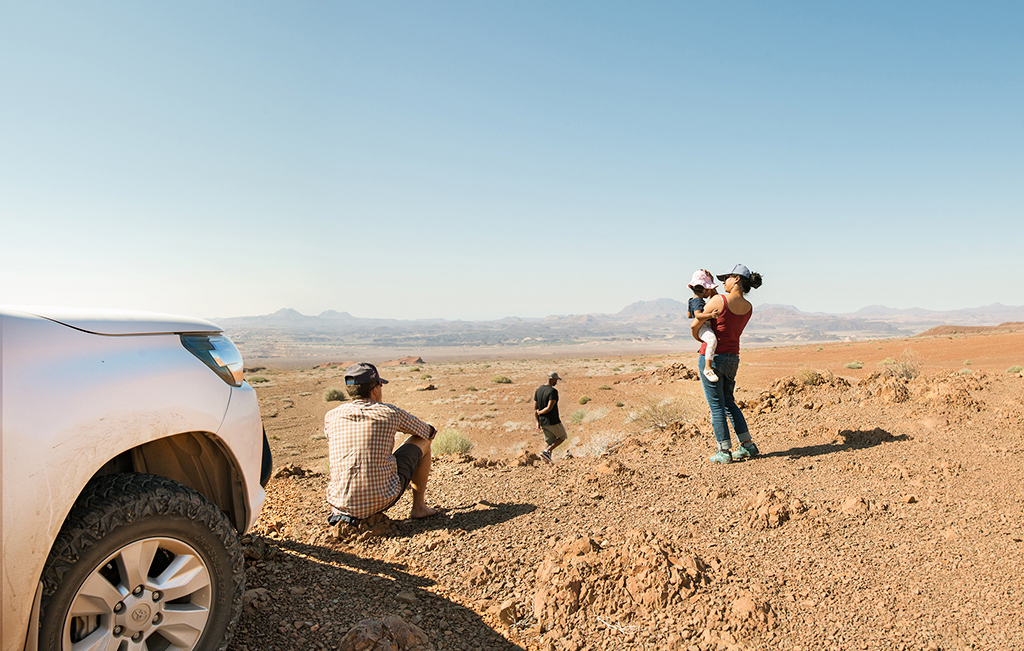
Stopping for a breather. Lynelle and family join Dr Heydinger tracking lions in north-west Namibia.
We met Dr Heydinger at a busy fuel station in Karibib. He greeted us and started loading his gear into the back of the 4×4 that we had hired to join him for field work. There was a toolbox, cooking essentials, a tent, a bed roll, a first aid kit and 50 litres of water. Field work, I was told, was unpredictable, and there was often the need to simply sleep wherever the “work day” ended.
I still had no idea exactly what “field work” entailed. I nodded in the wisest way I could muster, and tried to get ready for whatever came next.
Dr Heydinger is sharp-featured, smart and energetic. Before we left the fuel station he laid out our vague plan. A call had come in that some lions could be close to a tourist area near the famous ‘White Lady’ rock painting. It was our task for the day to respond to that call. I thought about my life back home: I’m a medical doctor, now lecturer. Tracking down wandering lions was about as far from my comfort zone as I could imagine.
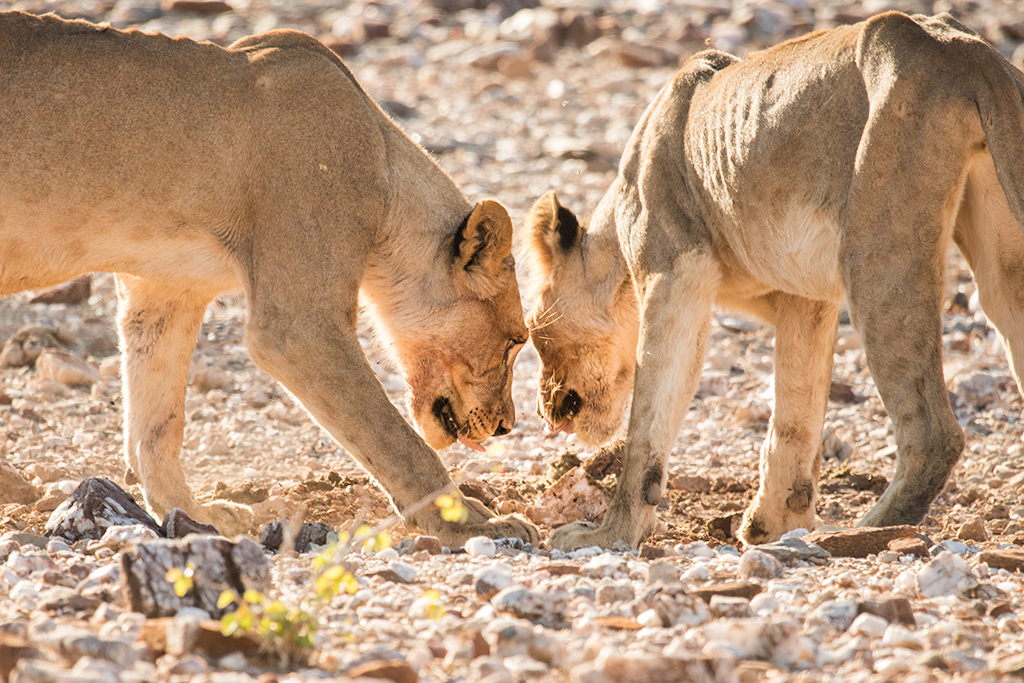
Two desert-adapted lionesses feeding on the remnants of a cow, belonging to a local livestock owner.
In joining the response to the call at ‘White Lady’, I was given an opportunity to witness some of the critical components of The Lion Rangers’ work. Dr Heydinger stopped the bakkie often once we entered the broad area where the lions had been sighted. Sometimes it was to point out animal spoor in the road. Here went a leopard, there went a lion. But more often than not, the bakkie came to rest in a cloud of dust so that we could talk to people: community members, lodge owners and local guides, to get information about this group of lions that had apparently settled on a tourist path nearby.
With long distances, challenging terrain, limited network coverage and a multitude of languages spoken, communication here is a particular challenge and I began to appreciate that what may seem like glamorous ‘lion-work’ was more often than not the realness of ‘people-work’.
In the week that I spent at Wêreldsend, I slowly started to get a better idea of why this kind of community-driven work is essential. The community and the lions have overlapping worlds here. Using a community conservancy model, Namibia has placed wildlife management back in the hands of local people. Projects such as The Lion Rangers align with this system to work with the people in the management of these apex predators. A key area of potential conflict is livestock. Goats, sheep and some cattle are central to livelihoods, and are sometimes taken by lions seeking food. The Lion Rangers and farmers have had to put strategies in place to contend with this possibility.
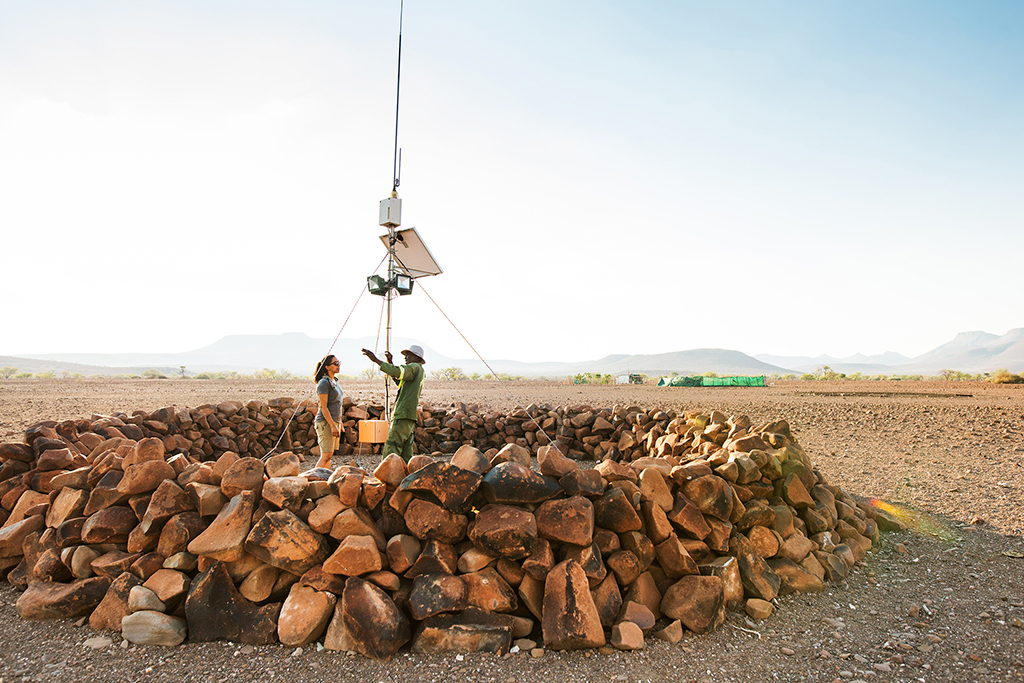
Lynelle talks with local farmer Alfeus Ouseb, a livestock owner, where the first early warning tower was installed a few years ago.
Part of the lion population has been collared. These collars transmit location signals at specific points in the day. These signals can be useful, as we experienced at ‘White Lady’, where location pins and discussion with the community confirmed that the lions were not posing a threat to humans or livestock.
Early-warning towers are able to detect signals from collars and have been installed at specific locations to warn farmers when lions may be approaching. The alarm and lights, when activated at early-warning towers, act as a potential deterrent to lions and warn both farmers and The Lion Rangers that lions may be approaching a farm. This kind of forward-thinking technology, together with on-the-ground efforts from local Lion Rangers and rapid response teams, helps to mitigate the potential impact of lions on farmers’ livestock and livelihoods. This is part of the work, which I now understand to be absolutely essential in the conservation of these desert-adapted lions.
By the time Bash and my daughter arrived in Namibia, I still had not seen a lion. I accepted this as a good sign. Live and let live and all that. On our final day at Wêreldsend, Dr Heydinger tells us that there is a group of lions nearby that we will be tracking in the bakkie the next day. ‘It’s going to be a long day,’ he says. I pack food and juice for my daughter. She’s a smart kid, and I get her excited about the idea that we might see a lion tomorrow. It takes the better part of five hours the next day, but we do track down a lioness. She is glorious, powerful and sleek in a way that makes me feel small and very much like prey. My daughter, in a classic toddler move, has fallen asleep and misses the entire sighting.
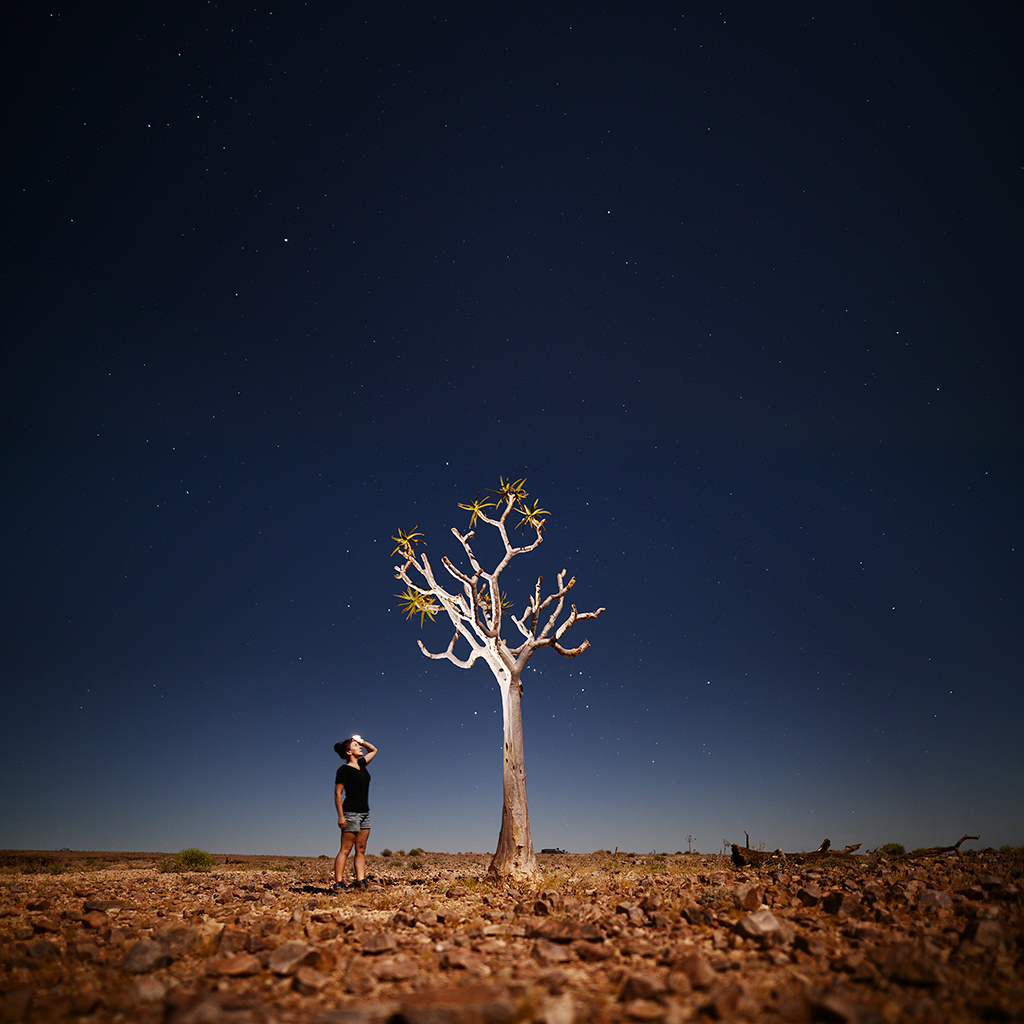
Quiver trees at night. AJ heads out during a full-moon night at Fish River Lodge to enjoy the spectacular view.
The heat and jostling of the long bakkie ride takes its toll. After finding the lions, we are all exhausted and pull over next to the shade of an overhanging rock formation. I give my daughter some juice in the car. Out of the corner of my eye, I spot AJ and Bash having some fun trying to climb the overhanging rock-face. We are all something of novice rock-climbers, so it must have seemed like a smart idea at the time. It isn’t. It’s daft.
Moments later, I hear a loud noise and see Bash lying flat on his back. His head lying precariously close to sharp rock shaped like a pointy death-pyramid. Evidently, while he was climbing, a piece of rock he was holding broke away from the rock-face and he fell. I take in the scene and something goes quiet inside me, a learnt response from training in medical school. When everyone is about to panic, your role as the doctor is to take a breath.
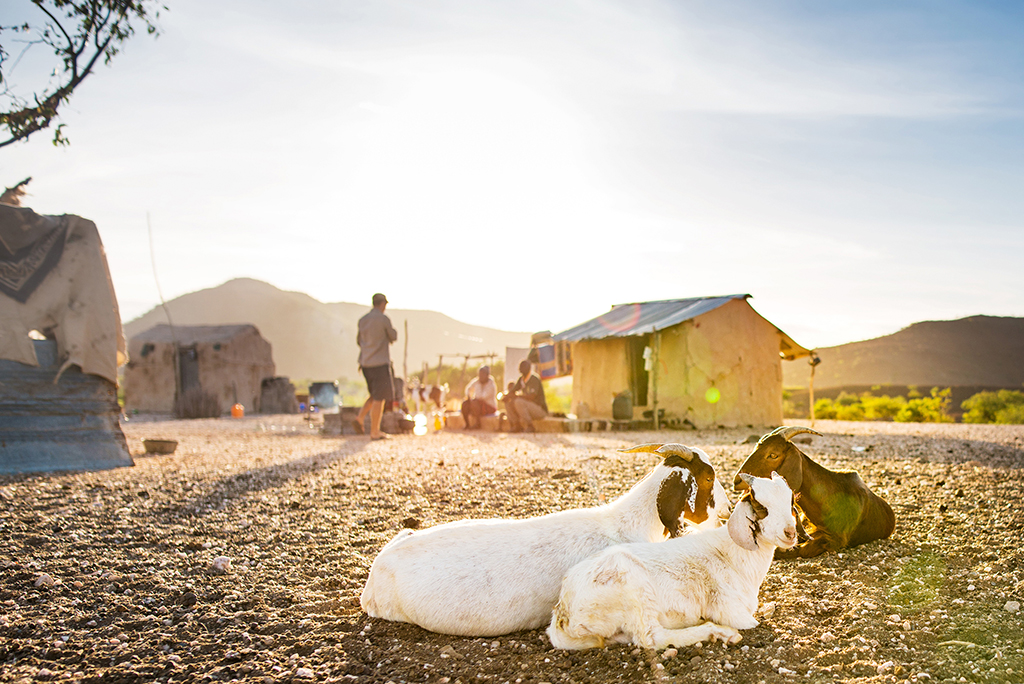
Dr Heydinger interacting with local community members about lion issues.
I walk over to him and in those few metres, I am already methodically assessing him, ticking off the checklist that was programmed into my brain a long time ago. He’s awake. He’s talking. There is no obvious bleeding. These are all good things… very, very good things. I crouch down beside him and give him a look that he immediately understands to be equal measures of concern and fury, that he has done something very foolish. I do a careful assessment of his body and use a bottle of water to wash the dust and sand from the abrasion on his leg. More dust. Miraculously, nothing appears to be broken, and he is in fact, not dead.
‘Whatdoing mama?’ my daughter is watching the scene closely. ‘Dada fell, baby. Mama is helping.’
She puts an imaginary plaster on his leg and says, ‘Dada feel better now.’ We can’t help but smile a little. Toddlers are full of surprises.
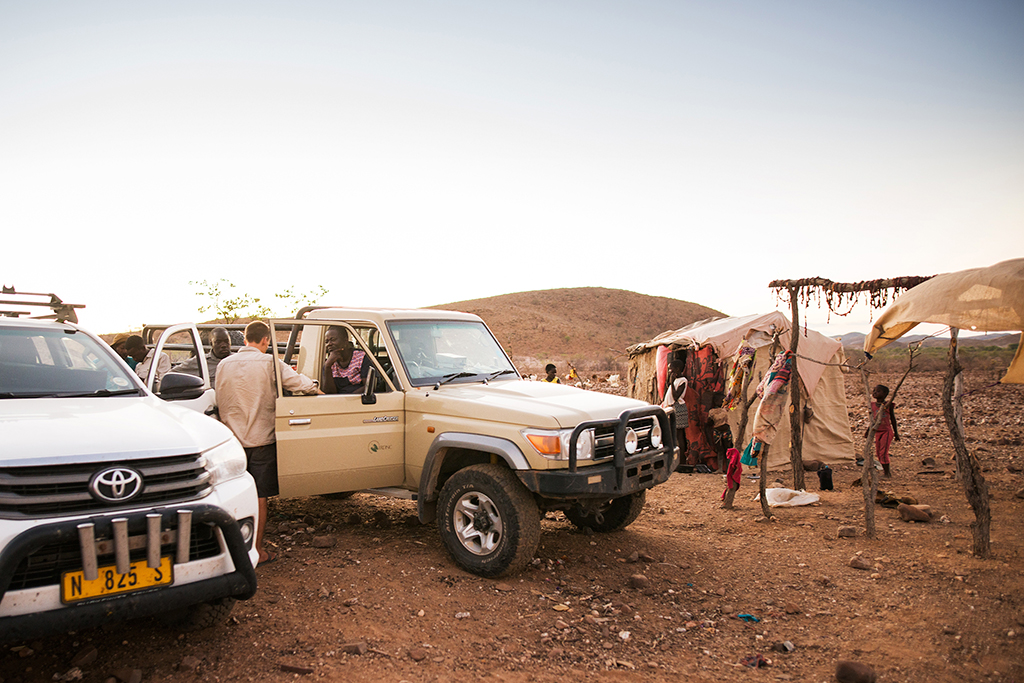
Dr Heydinger and Rapid Response team leader Linus Mbomboro interacting with local community members about lion issues
On the journey home, I feel the shift from being a child-free parent to being a mother slightly in awe of her adaptable child. Given the chance, my daughter delighted in the thrills of sleeping in a tent, bathing outside and spotting a real oryx from the safety of her car-seat.
‘Look at my toys oryx,’ she squealed, showing off her prized items.
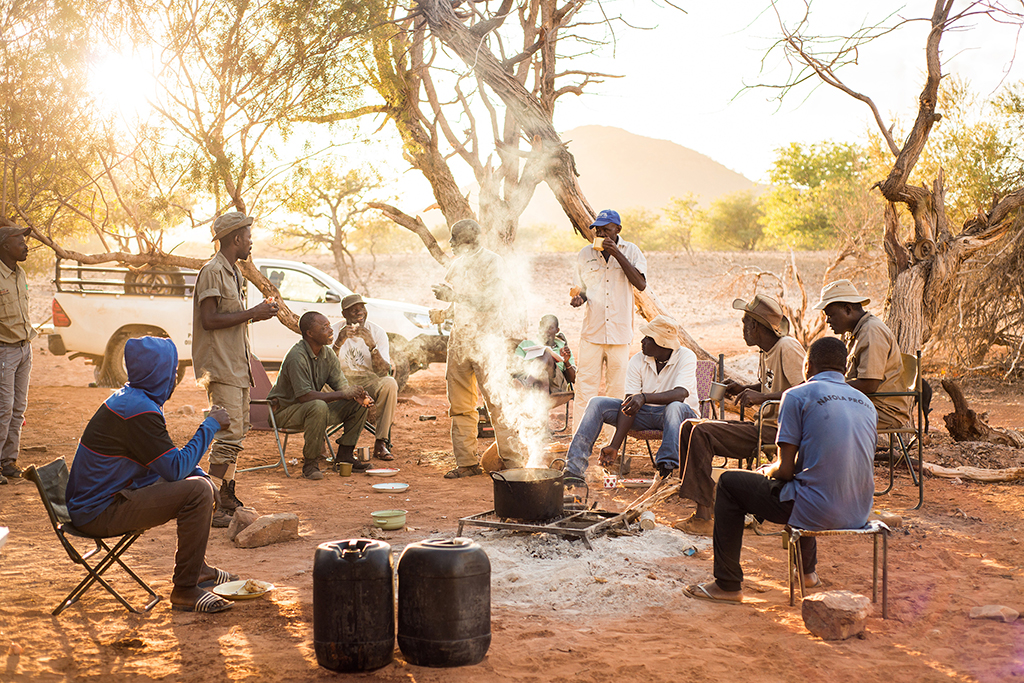
Lion Rangers meeting over breakfast while out doing field work
It seems that my misplaced anxiety failed to anticipate the possibility that moving out of our comfort zone may allow space for a truly unique family adventure.
When we arrive back in Cape Town, I am reluctant to wash my vehicle. Everyone tells me I should. That this level of dead bug body juice is bad for the paintwork and that I should have the dust removed from the nooks and crannies. But I can’t help it. The dust feels like a reminder of an extraordinary trip, of witnessing community-driven lion conservation first-hand and being forced to examine the senselessness of my anxieties around travelling with a toddler.
The dust that clings to the rims doesn’t feel like a source of shame. This is pride.
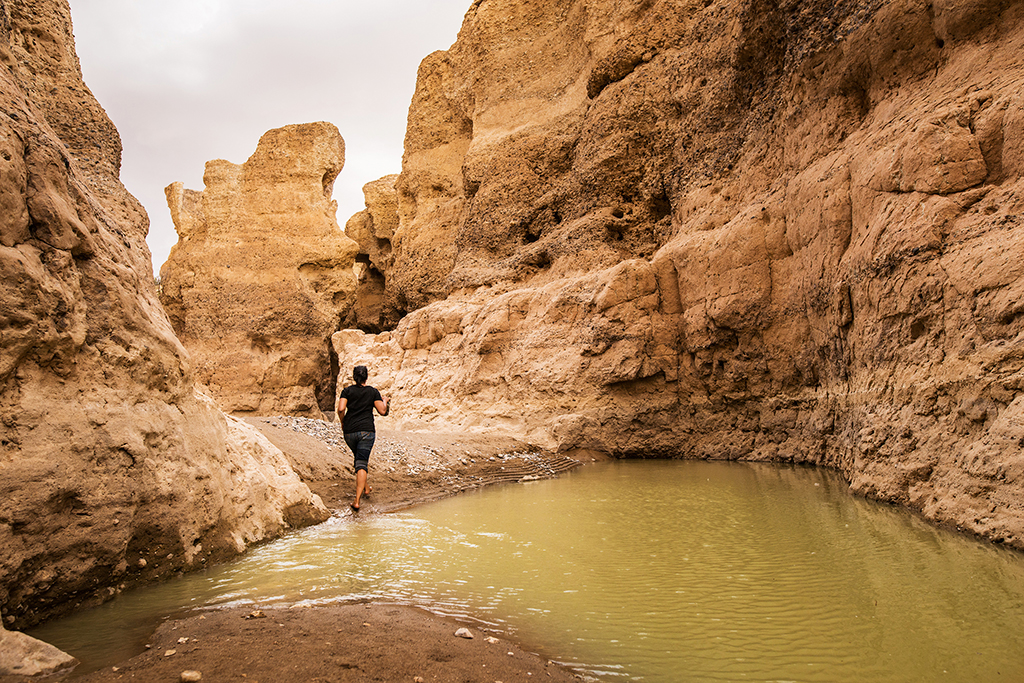
Lynelle, and AJ stop to enjoy some downtime at Sossusvlei.
Fascinating Facts: desert-adapted lions
• They walk up to 40km in a single night.
• Their territory, at approximately 3 500km2, is bigger than the average savannah lion.
• They do not need to search for water; they receive enough water from eating their prey.
• On average, they eat 8.5kg of meat a day, but can eat up to 65kg in one sitting.
• Desert-adapted lions live two to four years longer in the wild than savannah lions.

Trip Planner
Getting There
We travelled north from Cape Town to Wêreldsend, Namibia. All the South African roads we took are tarred and in good condition. Namibian roads are mostly gravel, and although they are in good condition, it is best to take it a little slower.
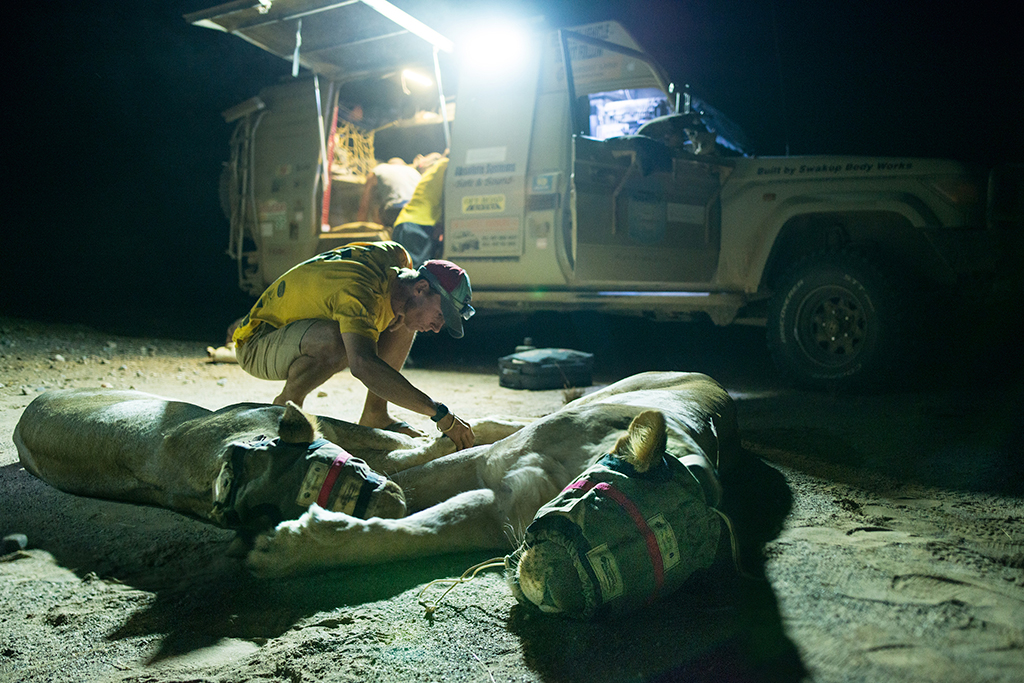
Dr Heydinger participating in a translocation of a pair of lions that had made themselves too comfortable near an area with livestock.
Stay Here
Fish River Lodge, Fish River Canyon
Fish River Lodge is the only lodge on the western side of Fish River Canyon, and is perched at the very edge of the rim. It’s undoubtedly one of the most isolated and thrilling places I have ever stayed. +264 61 228 104, [email protected]
fishriverlodge-namibia.com

Wêreldsend Environmental Centre, where the Lion Ranger programme is based. It is a very remote base camp, with the nearest grocery store two hours away.
Sesriem campsite, Namib-Naukluft National Park
Sesriem is an affordable camping site inside the park gates. Campers can access Sossusvlei one hour earlier and later than outside visitors, key if you want to catch that gorgeous sunrise and sunset. The staff went out of their way to help us. nwrnamibia.com/sesriem.htm

